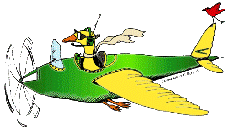Bird Strike Committee Proceedings
Date of this Version
10-24-2002
Document Type
Article
Abstract
A potential non-lethal technique to reduce bird-aircraft collisions, aircraft-mounted light, has been considered for nearly 3 decades, but has received no formal research as to its efficacy. We tested the hypothesis that during daylight hours birds exposed to an approaching vehicle exhibiting pulsing landing lights would react more quickly than birds experiencing an on-coming vehicle with non-pulsing (steady) or no lights (control). We used the PulseliteTM system (Precise Flight, Inc., Bend, Oregon, USA), an early recognition lighting system that allows an aircraft pilot to pulse the landing, taxi, or forward-facing recognition lights, and 2 General Electric sealed-beam 250-W aircraft landing lights. Using video, we quantified avoidance behavior by captive brown-headed cowbirds (Molothrus ater), Canada geese (Branta Canadensis), European starlings (Sturnus vulgaris), herring gulls (Larus argentatus), and mourning doves (Zenaida macroura) in separate experiments where captive birds were exposed to a vehicle fitted with the PulseliteTM system, and approaching at a consistent speed (33.5 m sec-1). While most species showed no differential response to light treatments, brown-headed cowbird groups (9 groups per treatment, 6 birds per group) responded more quickly to pulse versus control treatments, equating to a greater mean [SE] distance of the approaching vehicle from mid-cage per reacting bird (control: 35.8 [9.7] m; pulse: 50.5 [10.9] m). However, in a subsequent experiment involving the exposure of brown-headed cowbirds to control, pulse, and steady-light treatments, we observed no statistical difference in response among treatment groups (6 groups per treatment; 6 birds per group). While 250-W landing lights, pulsed at 45 cycles min-1, can influence avian behavior in response to an on-coming vehicle, the effects of the lights are inconsistent. We suggest that further research is needed to investigate avian response to specific ecologically relevant light wavelengths and a range of pulse frequencies.


